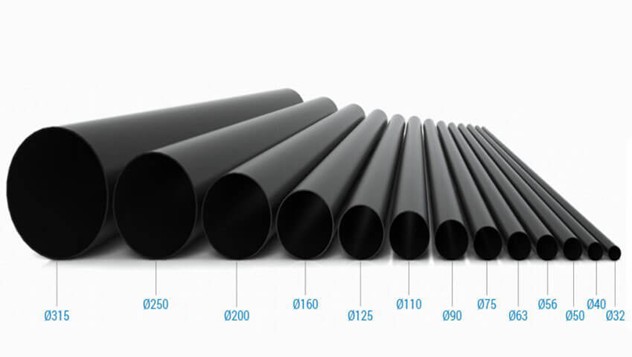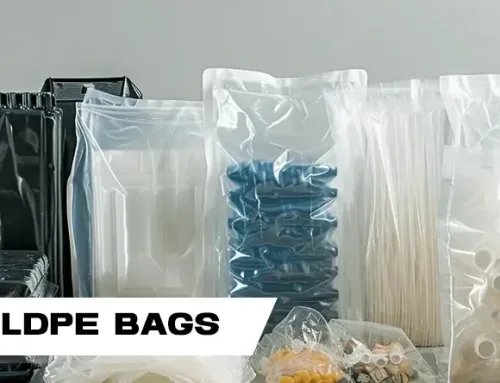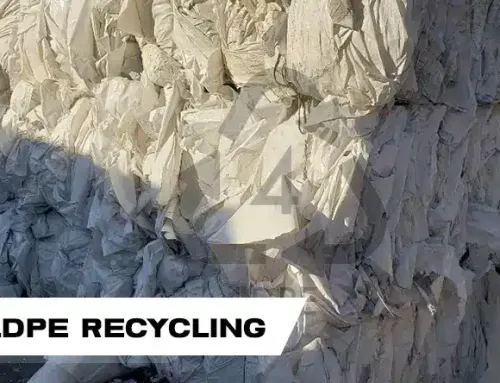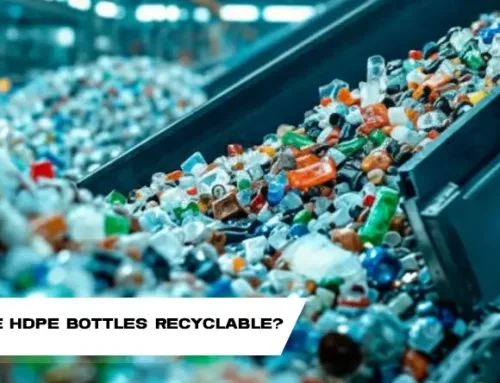HDPE pipe is an important commodity in various industries sold in multiple categories. This commodity is an important subcategory of polyethylene. Using different types of HDPE pipes, you can implement various complex projects. These pipes are a type of flexible plastic pipe. Using them, you can transfer various fluids and gases between two points.
Chemical, petrochemical, and food industries are among the situations that use this pipe. We should also mention that in some construction projects, the use of PE pipes is very important. Among its key features are the versatility, resistance, and durability of this product against environmental factors. Today we are going to examine the size, connections, and applications of HDPE pipes. So join us to the end.
What is an HDPE Pipe?
Let’s start this page by responding to an essential question: What is HDPE pipe? HDPE is one of the most typical materials utilized to make industrial pipes. HDPE is a class of thermoplastic polymers. This product is produced using petroleum and is available to customers.
The molecular structure of HDPE pipe is such that it can provide you with high density. As a result, HDPE is a strong, durable, and well-made product that does not weigh much. This means that you can use it even in special projects.
HDPE can be presented as one of the most widely used styles of plastic available worldwide, accounting for about 34% of manufactured plastics. Having wide applications in various fields has made users interested in it.
Need reliable HDPE grades for your piping project?
Key Attributes and Benefits of HDPE Pipes
What do you think are the advantages of HDPE pipes? Why should we use high density polyethylene pipe in our projects? The following list includes some of the most important uses of this pipe.
- Durability: This creation can exhibit good resistance to weather situations.
- Flexibility: This textile has features such as the capacity to bend without breaking. As a result, this pipe is ideal for rooms with seismic activity or moving soils.
- Different sizes: HDPE pipe sizes can be assorted. You should choose based on your task.
- Corrosion resistance: This pipe is a non-corrosive product. You can use it in water and sewage techniques.
- Cost-effectiveness: Its long lifespan and low care needs make it cost-effective.
- Environmental sustainability: HDPE is a recyclable textile. As a result, its use will not cause any problems for the environment.
- Chemical resistance: This important pipe can withstand acids, alkalis, salts, and other chemicals.
- Leak-proof: Joints made by butt welding and electrofusion welding create leak-proof joints.
- Lightweight: Compared to conventional piping materials, this product is light in poundage.
- Long life: You can use HDPE pipes for several years and not encounter any problems.
- Noise reduction: The noise level in these pipes is low, which also increases the efficiency level several times.
- Thermal properties: HDPE keeps a more uniform temperature than metal pipes and reduces the need for insulation.
- Impact resistance: Since this creation is impact resistant, you will not need protective supplies to utilize it.
- Erosion resistance: It is very resistant to corrosion and is appropriate for transporting fluids with insoluble solids.
HDPE Pipe sizes
After determining what high density polyethylene pipe is and its uses, we need to look at the sizes of this material. These pipes are measured in inches (imperial) or millimetres (metric). HDPE pipe sizes are determined by nominal diameter (ND) or outside diameter (OD) and wall thickness.
Global standards organizations have considered various categories for HDPE pipes. Accordingly, we have three main products: small-diameter (20mm to 200mm) pipes, medium-diameter pipes (200mm to 500mm), and large-diameter pipes (500mm to 1600mm). There are also larger sizes that are custom-made for different industries.
Small pipes are usually used for domestic projects and light irrigation. Medium pipes are used for sewage systems, and large pipes are usually used for storm and industrial wastewater management.
When choosing HDPE pipes, you need to pay attention to several different factors. These factors include flow requirements, type of application, environmental conditions, and pressure ratings. By considering these, you can make the best possible decision about using HDPE pipes for your various projects.

HDPE pipe fittings
The use of HDPE pipe fittings is important in various situations. For example, you can use these pipes in safe and leak-free systems. The use of fittings greatly reduces the chance of leaks. There are many examples of fittings available in the market today. In the list below, you can see the most important types of HDPE pipe fittings.
- Couplings: Connect two sections of pipe.
- Elbows: Change the direction of the pipe.
- Tees: Enable pipes to branch.
- Reducers: Connect pipes of different sizes.
- End caps: Close the end of the pipe.
HDPE pipe fittings are developed to be consistent with the material rating and pressure of the pipe. By using elbows, you can bypass obstacles. Reducers are used to adapt to flow restrictions. Tees are designed to be useful for distributing fluids.
Keep in mind that there are three main methods for installing HDPE pipe fittings. The following list provides you with these.
- Butt welding: Heating and welding the ends of the pipe.
- Electrofusion: Using an electric current to fuse the pipes.
- Mechanical connections: For temporary installations.
Applications of HDPE Pipes
This pipe can be used in various projects. HDPE pipe dimensions and HDPE pipe specifications are among the things that you should pay attention to. The dimensions and specifications of these pipes definitely directly affect the efficiency of these devices.
- Water supply: Drinking water allocation systems cannot resume work without this pipe!
- Sewage and drainage: This development is an excellent option for sewage and drainage of industrial assignments.
- Industrial: The strength and durability of this creation permit you to use it to transport industrial goods and chemicals.
- Mining: Utilized in the transportation of slurry and method water due to its resistance to scrape and impact.
- Agriculture: This outcome is also used in modern agricultural techniques due to its excellent flexibility.
- Marine: Used in aquaculture and underwater channels due to its resistance to decay in salty environments is a standard thing.
- Gas distribution: This pipe is utilized in gas distribution systems due to its high resistance to chemicals and UV rays.
- Cable protection: This pipe can also be used to protect confidential electrical and telecommunication cables.
- Chemical transportation: This pipe has a variety of uses for transporting chemicals and hazardous materials.
Apart from all the above, you can also use HDPE pipes in fire extinguishing and fire prevention systems.
HDPE pipe vs. Other Materials
Of course, it is possible to use HDPE pipe in most projects, but sometimes people ask us what is the advantage of this pipe compared to other plastics available on the market. If we want to compare HDPE with PVC, we must say that this product is not very strong. PVC is not resistant to ultraviolet rays and is easily damaged.
You can also put this product against concrete and clay. In any case, HDPE has more positive characteristics and easily beats these products.
Keep in mind that some experts are also interested in comparing HDPE with copper and ductile iron. This product is also resistant to corrosion and flexible. As a result, you can use it in a wider variety of projects.

Keep in mind that some experts are also interested in comparing HDPE with copper and ductile iron. This product is also resistant to corrosion and flexible. As a result, you can use it in a wider variety of projects.
HDPE Drainage Pipes
Using HDPE pipes for drainage systems can also bring many advantages. The internal surfaces of these pipes are smooth and exhibit minimal friction. As a result, the likelihood of these pipes clogging in normal conditions is very low! Apart from this, compared to the classic material, this product is lighter and more durable. That is, if this product is included in your project, you will be able to rest assured about its health and performance for decades. In addition, during installation, you should pay attention to global standards and use the services of professional experts. This affects the process of using HDPE pipes in drainage.
Future Trends in HDPE Pipe Technology
There are different versions of HDPE pipes available in the market. Experts are always using innovations and technologies to make better versions of this material. Reinforced HDPE is one of these modern products.
Keep in mind that new techniques have also been designed for the use of HDPE pipe joints. Techniques such as electrofusion and butt fusion are among the popular ones that have gained many fans. Since HDPE is a stable material, you can use it in different situations. Of course, to buy such pipes, you should also employ the services of professional experts and trained teams.
Conclusion
As you can see on this page, the use of HDPE pipes in different situations is an important issue! This pipe is flexible and can be easily used in different systems. Keep in mind that HDPE forms urban infrastructure and can transform human lives. This is also what has made users interested in using this device. If you are also interested in buying or using such pipes, you should go to trained experts for advice. Getting advice from leading teams will help you make the best possible purchase. In addition, HDPE pipes also have many long-term benefits for the environment.






Leave A Comment